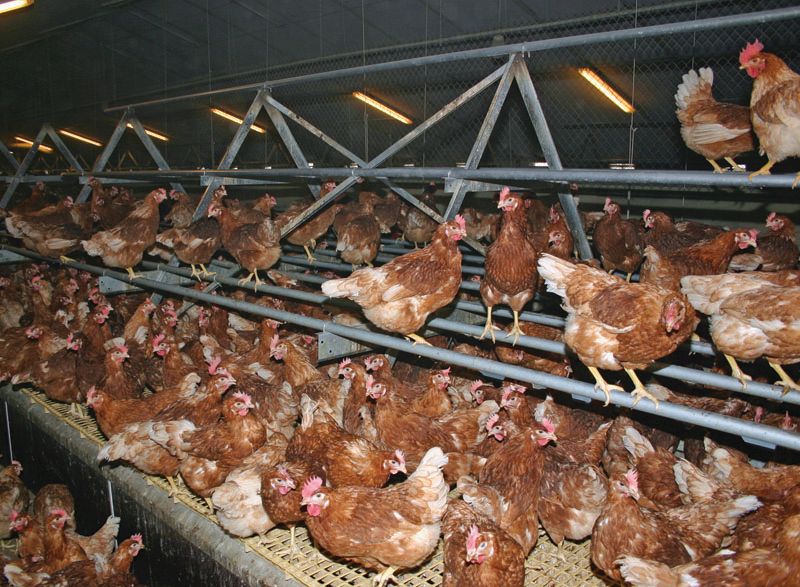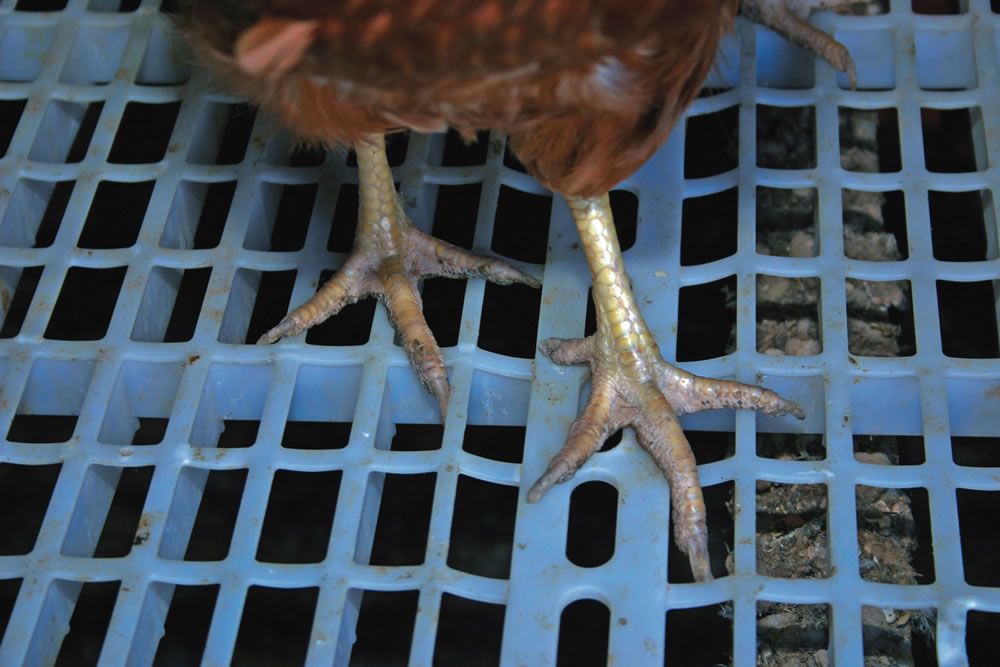
Freedom Food, also known as RSPCA Assured, is to demand the installation of aerial perches in free range egg production units – and some producers could be required to install them this year.
The requirement for aerial perches, which were previously the subject of a political battle between Westminster and the European Union, is included in Freedom Food’s new standards, which come into force on October 7 this year.
The insistence on raised perches will not take effect until October next year, but producers putting flocks in later this year will need to have perches installed beforehand if the birds are to remain in production beyond October 7, 2017 – the deadline for the new perch rule.
In England and Wales free range egg producers are allowed to class floor slats as perches under an interpretation of European Union welfare rules adopted by the Department for Environment Food and Rural Affairs (Defra).
The European Commission threatened to take legal action if the Government did not adopt an interpretation requiring aerial perching, but subsequently abandoned the threat.
However, in Scotland, where agriculture is a devolved responsibility, raised perches are required.
Freedom Food is now adopting the Scottish interpretation in its rules.

15 centimetres of raised perching per bird
"Producers in Scotland and Ireland already successfully provide 15 centimetres of aerial perch space per hen," said Mia Fernyhough, senior scientific officer with the RSPCA, when asked about the changes to the Freedom Food standards.
The new standards will require 15 centimetress of raised perching per bird in all new and refurbished units from October 7, 2017.
Existing units will need eight centimetres of aerial perching from that date and 10 centimetres from October 7 the following year.
"We decided on a gradual introduction for existing units to give producers time to make the changes," said Mia.

FarmingUK asked whether these changes would apply to flocks housed after October 7, 2017 or whether the rules would apply to all birds housed on that date, including those introduced later this year and still in production.
Compliant by October 2017
She said: "We would expect all producers to be compliant with the standards by October 2017.
"The three month notification period, together with the one year lead-in time, should be sufficient for producers to prepare for the new standards, for example at their next flock turn around," said Mia.
"Many producers will already be providing some aerial perching, for example over drinker lines.
"We therefore do not anticipate eight centimetres causing significant issue, particularly given that producers in Scotland and Ireland already successfully provide 15 centimetres of aerial perch space per hen," she said.
The new requirement in the standards reads: "From 7th October 2017, all new builds and buildings being refurbished must provide a minimum of 15cm raised perch space per hen."
On current units, it reads: "In existing buildings (built before 7th October 2017) raised perches must be provided at not less than 15cm per hen, unless combined with slatted or mesh flooring."
However, the standards go on to say that, where slatted or mesh flooring is included in perching space, "at least 8cm of raised perch must be provided per hen from 7th October 2017" and "at least 10cm of raised perch must be provided per hen from 7th October 2018."
Additionally, a guidance note with the new standards warns: "Existing members may, in future, be required to provide 15 cm of raised perch space per hen.
"It is therefore recommended that producers increasing their perch provision consider this likely future requirement when designing their perch provision."
Defra versus Brussels
The issue of raised perches was the subject of a lengthy dispute between Defra and the European Commission.
At one point Brussels threatened to haul Defra before the European Court unless it complied with the Commission's interpretation, but Defra refused to back down.
It insisted there was no definition of a perch in the laying hen directive and it said there was some scientific evidence to suggest that welfare may be compromised by the use of aerial perches in non-cage systems.
Defra also pointed to the financial and practical implications for the egg industry of having to install aerial perches.
Whilst Defra’s interpretation of the perching rules will remain unchanged for other free range egg producers, those who are part of Freedom Food will now have to find the funds to carry out the changes required by the news standards.
These new Freedom Food standards cover a wide range of issues involving the management of commercial laying hens.
Requirements on litter
Freedom Food says litter must cover the floor within 24 hours of birds being placed in the shed, there must be a minimum depth of five centimetres for the first two months and a minimum depth of 10 centimetres thereafter.
It says that birds must not be held on slats for more than 24 hours after placement and must have access to well maintained litter at all times after this period.
Clauses on lighting requirements insist on a minimum illumination of 20 lux in the open areas of the house.
An explanatory note reads: "Research demonstrates that increased lighting levels within the house can encourage birds to range by reducing the contrast between the indoor and outdoor areas.
"Improved ranging is associated with lower levels of plumage damage from injurious pecking.
"Increased light levels are also associated with improved activity, reduced eye abnormalities and reduced fear and stress.
The new standards replace the previous version, which has been in place since September 2013.
